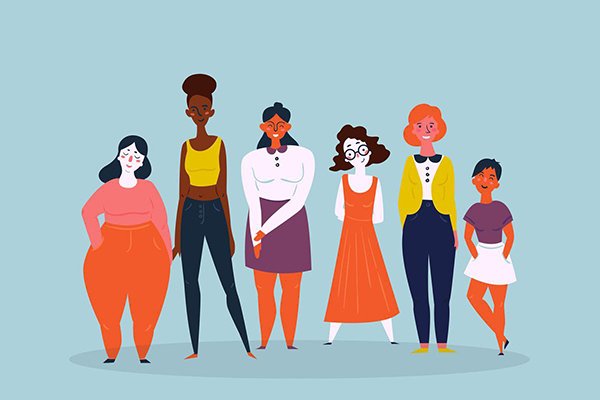For most of history diplomacy was a man’s world.
The image of a diplomat often meant a man in a suit signing treaties or leading delegations. Women were usually excluded not because they lacked capacity but because social norms, traditions, and laws kept them out.
It was not until the 20th century that women began entering foreign services in more visible numbers. Even then many faced rules that made them resign when they married or limited them to clerical tasks. Over time, global equality movements challenged those norms and women gradually gained ground.
Today, in 2025, diplomacy is changing once again. Women are playing a central role in this transformation, shaping global dialogue and representing a broader vision of leadership. Still, diplomacy remains far from gender balanced. Women diplomats now stand not only as representatives of their nations but also as symbols of how domestic struggles for equality connect with the global pursuit of justice and cooperation.
Their growing presence shows a transformation: diplomacy is becoming shaped by diverse voices that champion peace, justice, and equality.
Historical Background
Women’s diplomacy participation expanded only after the mid-20th century. Trailblazers like Vijaya Lakshmi Pandit became the first woman to preside over the UN General Assembly in 1953. At that time, Eleanor Roosevelt helped shape the Universal Declaration of Human Rights and showed women could lead in global affairs.
According to the United Nations, from 1992 to 2019 women accounted for only 13 percent of negotiators, 6 percent of mediators, and 6 percent of signatories in peace processes worldwide. This means for most of modern diplomatic history women’s voices were mostly missing in decisions about war, peace, and treaties. However, the major shift began when more countries allowed women into politics and civil services.
Read More: Evolving Role of Women in Combat
A Slow but Visible Change
In 2024 women held only about 21 percent of ambassador and permanent representative roles globally. This is one in five ambassadors. But some countries have much higher rates. Nations such as Canada and Sweden now have over 50 percent women ambassadors in several postings, showing that gender equality in diplomacy is possible with the right policies and political will.
This growing visibility, however, tells only part of the story. Numbers alone cannot show how women’s presence changes the nature of diplomacy itself.
Around the world, when women take part in negotiations and peace processes, research shows that the results are not just symbolic but they are more sustainable. Agreements are about 35 percent more likely to survive fifteen years when women meaningfully take part.
Women also tend to expand the scope of discussion. They often bring to the table issues such as education, healthcare, justice, equality, and community rebuilding. These are the areas that make peace more meaningful and lasting. Their inclusion strengthens diplomacy because it connects political decisions to human realities.
Yet, in many international settings, this participation still remains limited. Women are often present in conferences and councils but their voices do not always shape the final outcome.
The change, therefore, is visible in numbers but still fragile in practice.
Stereotypes Women Diplomats Face
This gap between visibility and influence is reinforced by persistent stereotypes. One common stereotype says women are “too emotional” for hard negotiations. This view ignores that emotional intelligence can be a strength in building trust.
Another stereotype says women belong to “soft” domains such as culture, education, or human rights. Men are assumed to lead security, trade, or defense. This division keeps women away from positions that lead directly to top leadership.
Additionally, the challenge grows heavier when personal and professional expectations collide. Diplomacy often involves frequent relocation, unpredictable schedules, and long separations from family. Many people still assume women must choose between career and family, even though men in the same roles rarely face such judgment.
Moreover, a new layer of difficulty has emerged in the digital age. Women diplomats also often face online harassment, threats, and abuse. Public roles expose them to gendered attacks. A study on digital diplomacy found that women diplomats receive far fewer retweets and engagements and face more gender-based harassment – a pattern researchers call “invisibility bias.”
All of these tactics are used to push women away from leadership roles.
Read More: Does Diplomacy Still Prioritize Men over Women?
Structural Barriers Beyond Stereotypes
Stereotypes are only one layer of the problem. Beneath them lies a deeper system of rules, traditions, and practices that continue to keep diplomacy unequal.
Even when women overcome social expectations, they still face structural barriers inside institutions. Hiring and promotion criteria in many foreign ministries are often unclear and assignments to high-profile postings can depend on personal networks rather than transparent evaluations. This makes it harder for women, especially those without elite connections, to reach ambassador or leadership positions.
Furthermore, mobility rules also create challenges. Diplomatic careers often require frequent relocation and many postings still assume that the diplomat will have a spouse available to move or manage domestic life. For women who are caregivers or mothers, this assumption can turn into exclusion. Family policies and parental leave often fail to reflect the realities of global service which means women pay a higher personal cost to stay in the profession.
According to a study by the LSE, many institutions try to solve gender imbalance by “training women” to fit existing systems instead of changing the systems themselves. Leadership workshops and negotiation courses are valuable, but they treat women as the problem that needs fixing. The report argues that without reforming the structure – the policies, workplace culture, and power hierarchies – equality will remain surface-level.
This institutional imbalance also connects with wider forms of discrimination. The UN Women and the Office of the High Commissioner for Human Rights (OHCHR) warn that political violence, digital abuse, and institutional discrimination are increasing. These patterns push women out of leadership spaces and not just block their entry.
Taken together, these factors create what researchers call a “leaky pipeline.” Women may enter diplomatic training programs in equal numbers to men, but fewer advance to the top. The barriers are rarely visible from the outside, yet they shape every level of decision-making inside ministries and missions.
The result is a diplomacy that still reflects old power patterns even as it claims to be modern and inclusive. Real change needs more than new rules. It needs a new way of thinking that sees diversity not as a favor to women but as a true strength for global cooperation.
Read More: Swedish Envoy Shares Her Message on International Day of the Girl Child
Way Forward
The story of women in diplomacy is one of persistence and quiet revolution. From being excluded to leading global negotiations, women have transformed what diplomacy looks like.
Gender equality in diplomacy is not a symbolic gesture. It produces better decisions, fairer policies, and stronger international cooperation.
Simply put, when diplomacy includes women, it serves the world more completely. But the journey is not over.
The challenge now is not only to enter the room but to reshape how power works inside it. Real equality will come when every voice, regardless of gender, can influence decisions with the same respect and authority.
In the next part of this series, I will speak with a woman diplomat who has lived these realities. Through her experiences, we will see how progress, struggle, and resilience coexist in the everyday work of representing a nation on the world stage.

Noor ul Sabah
Noor ul Sabah is a feminist researcher focused on intersectional approaches to gender, technology, and governance. Her work explores how power and identity shape experiences of violence, migration, and citizenship.



